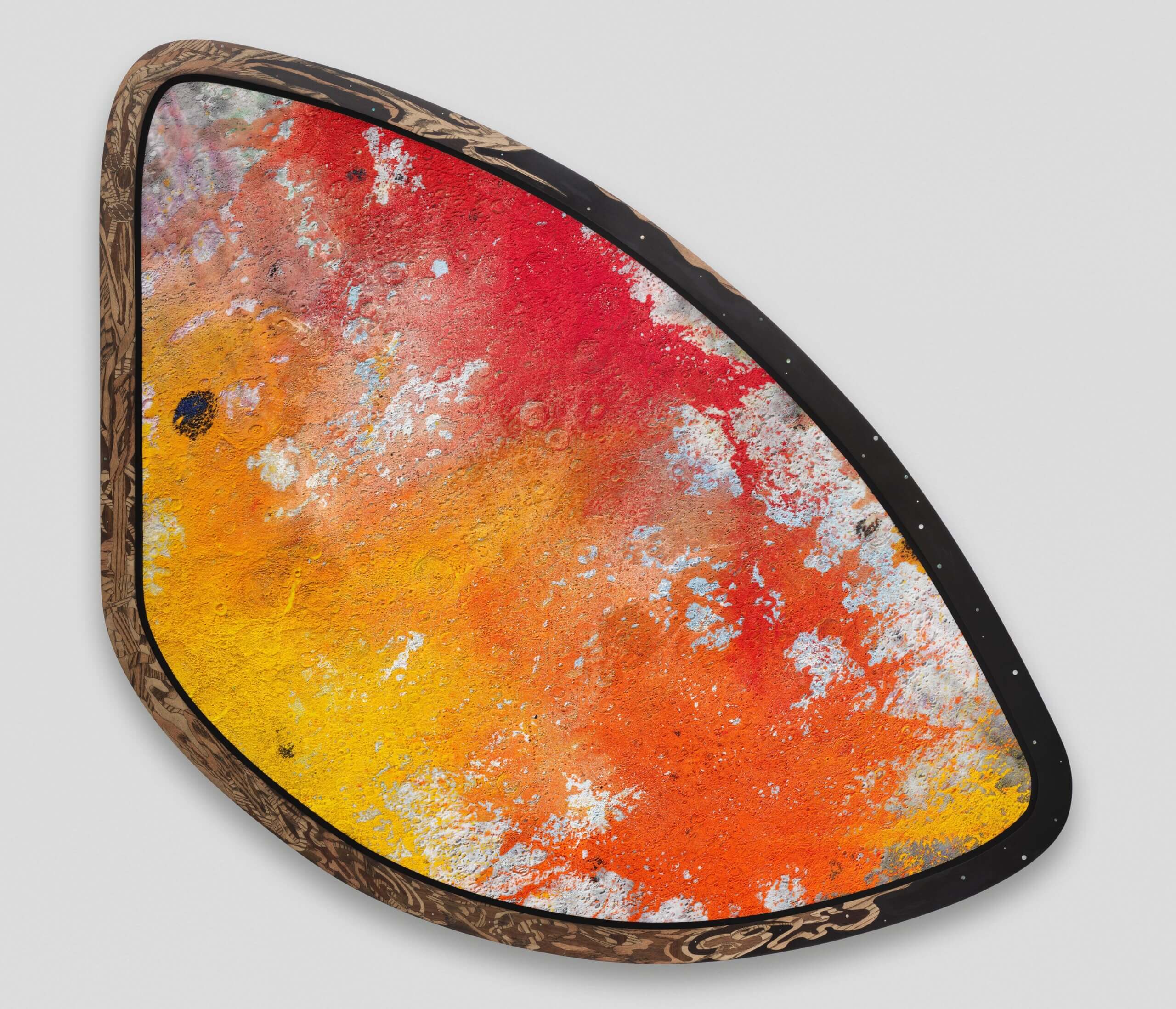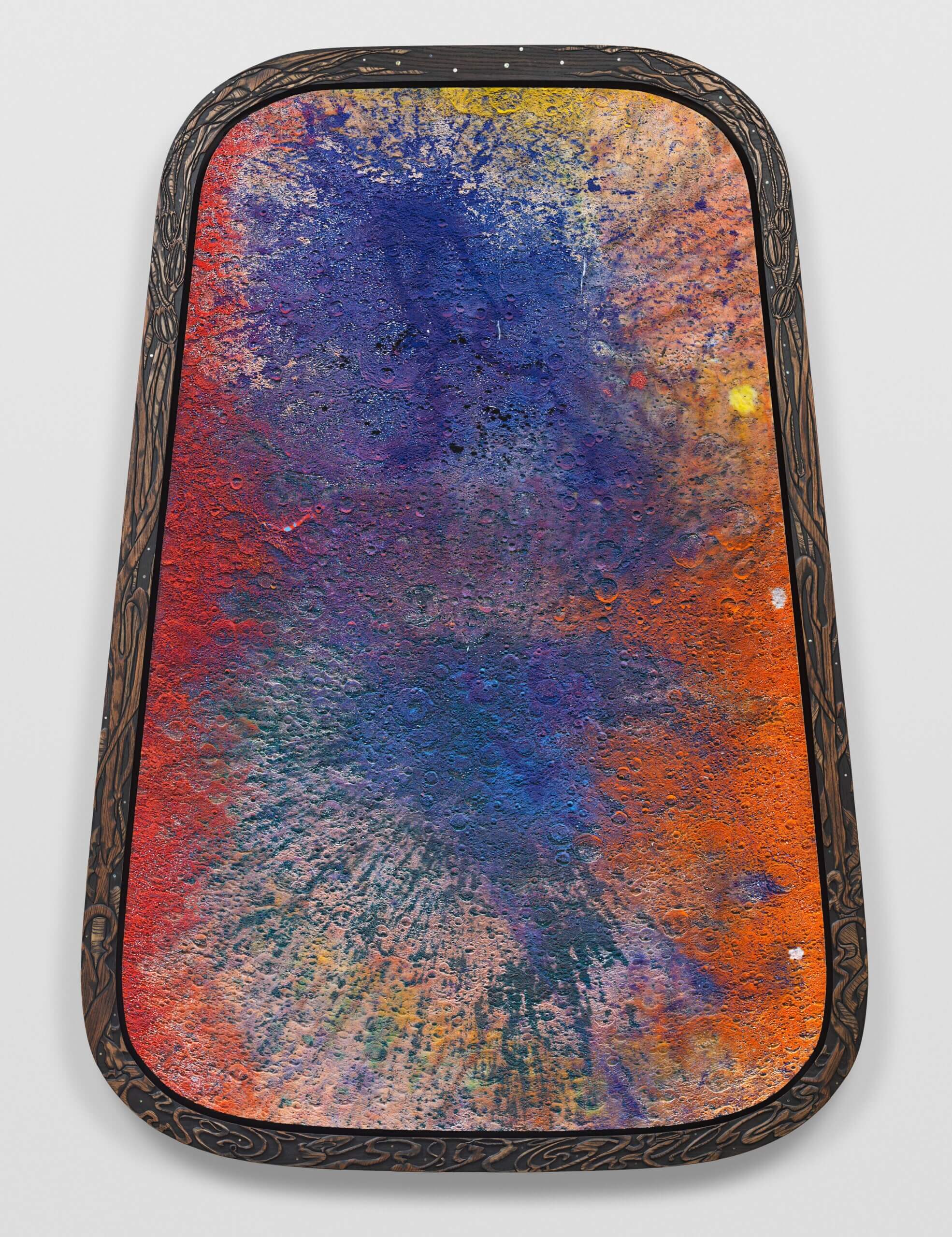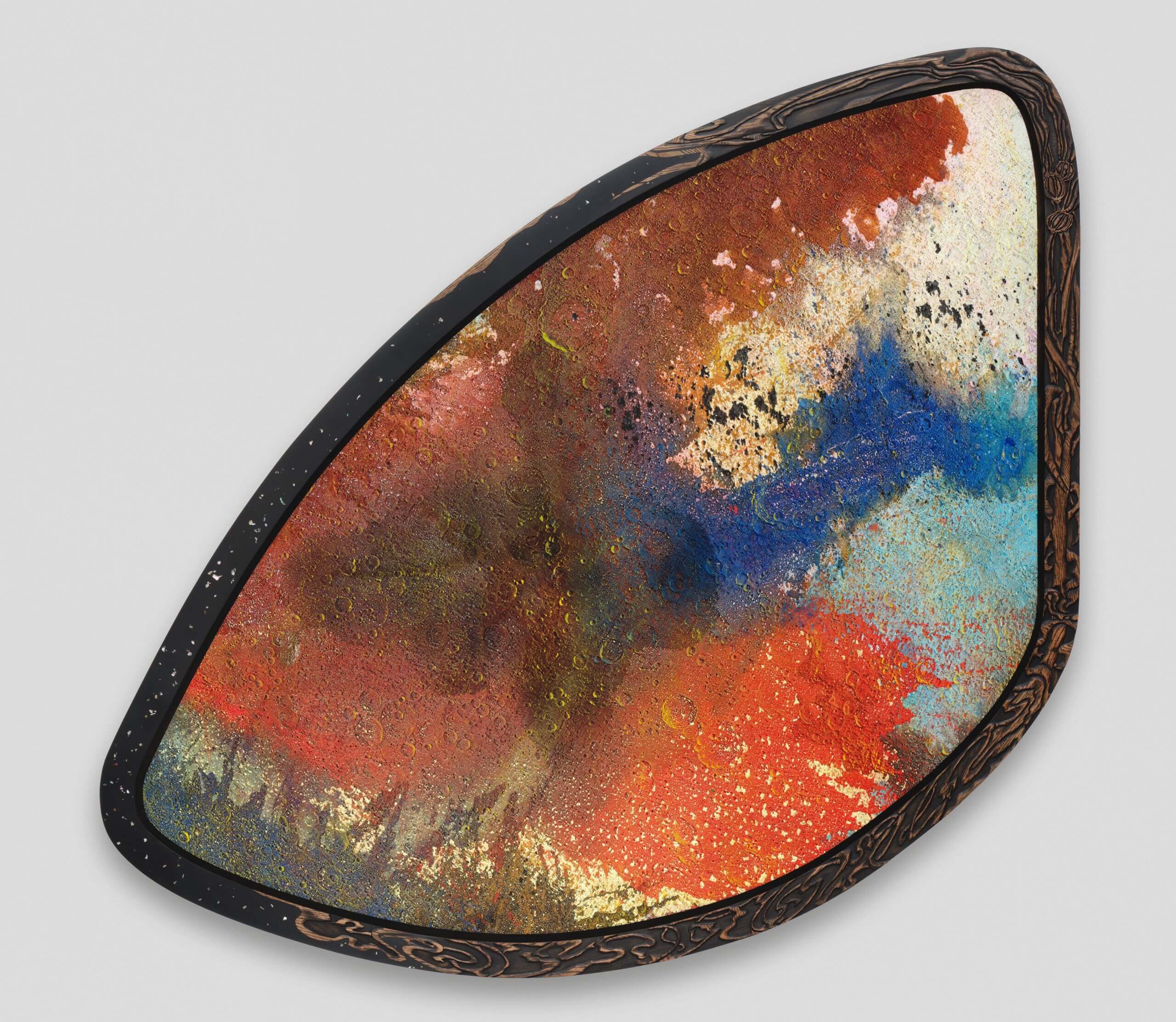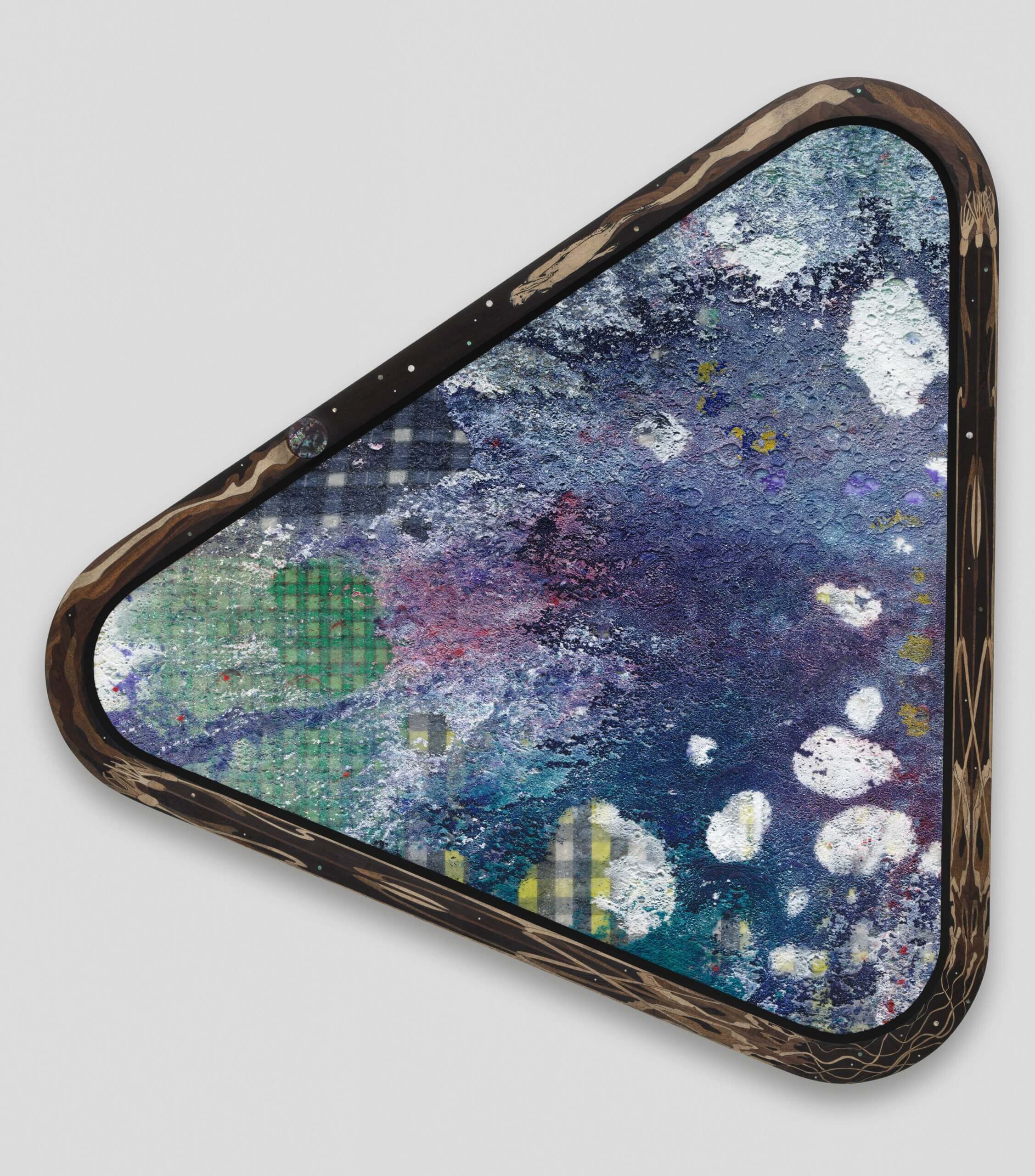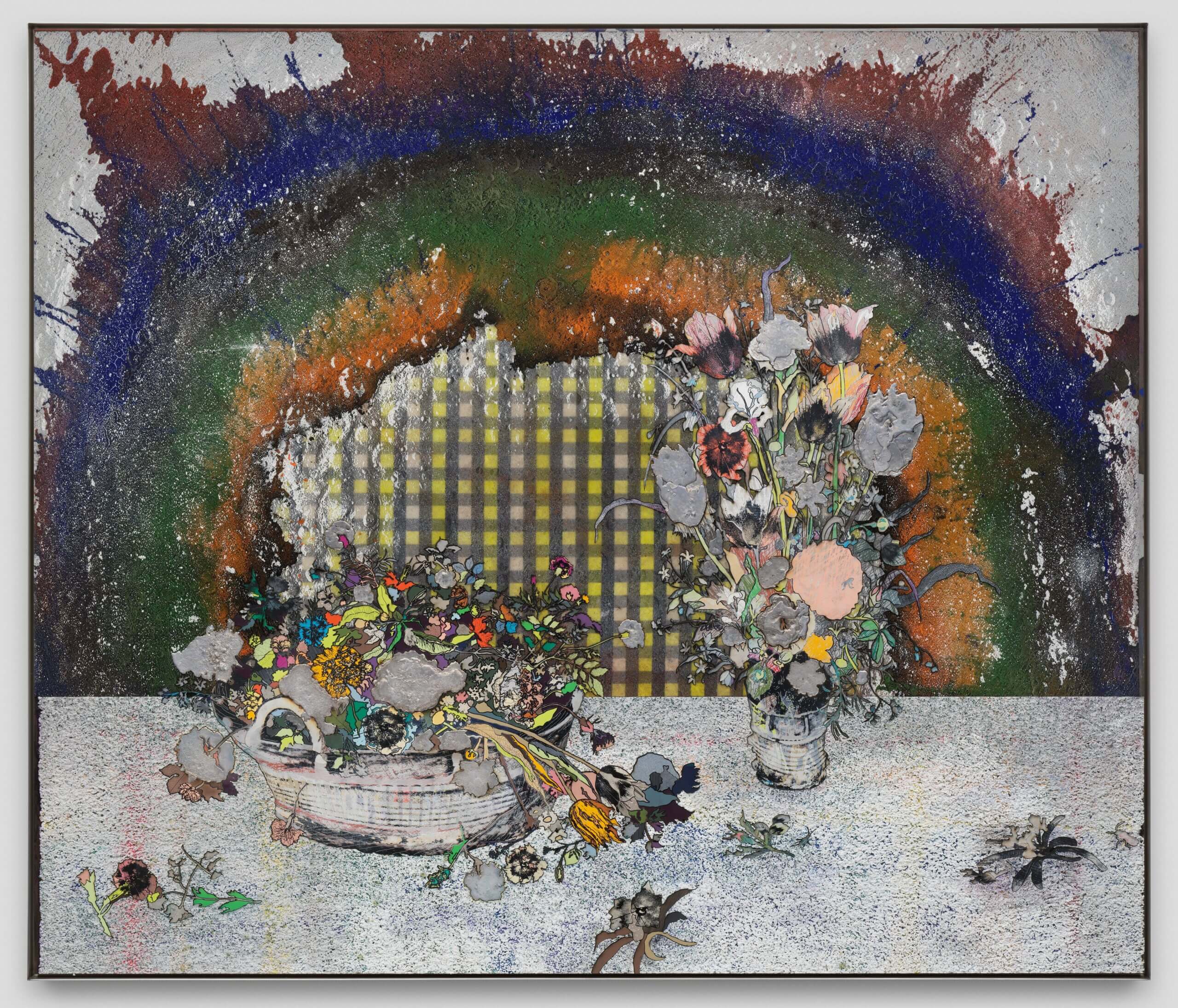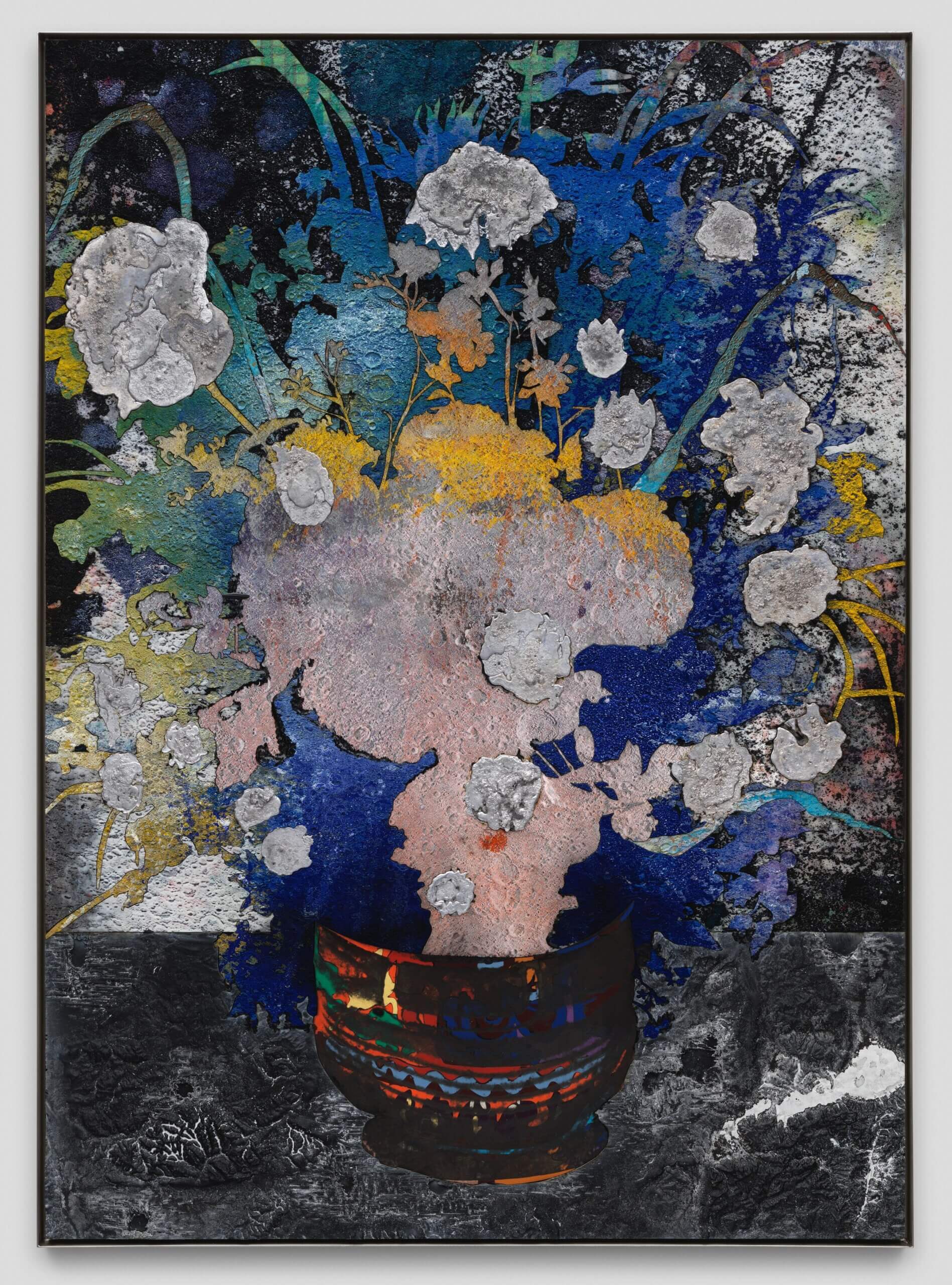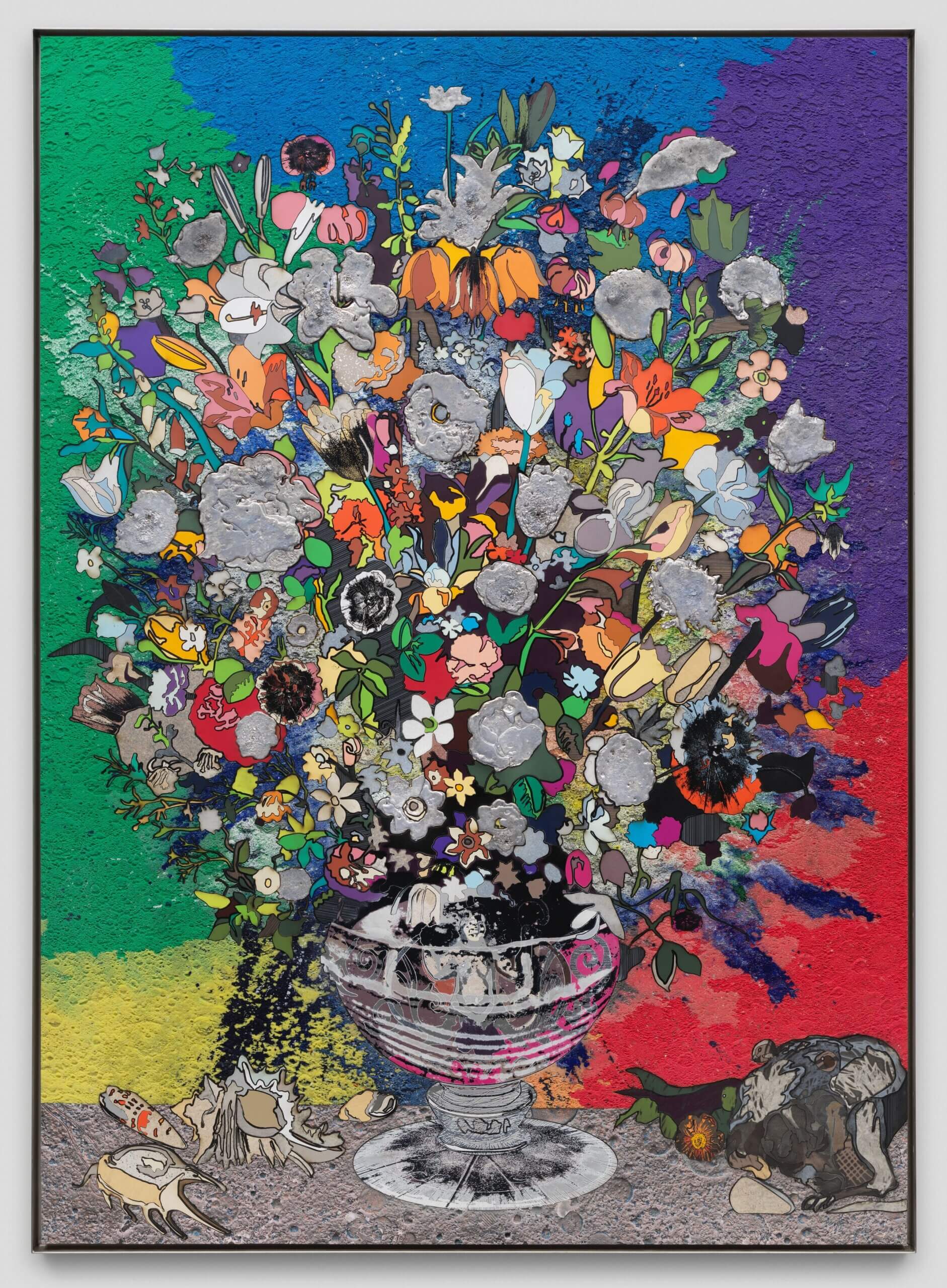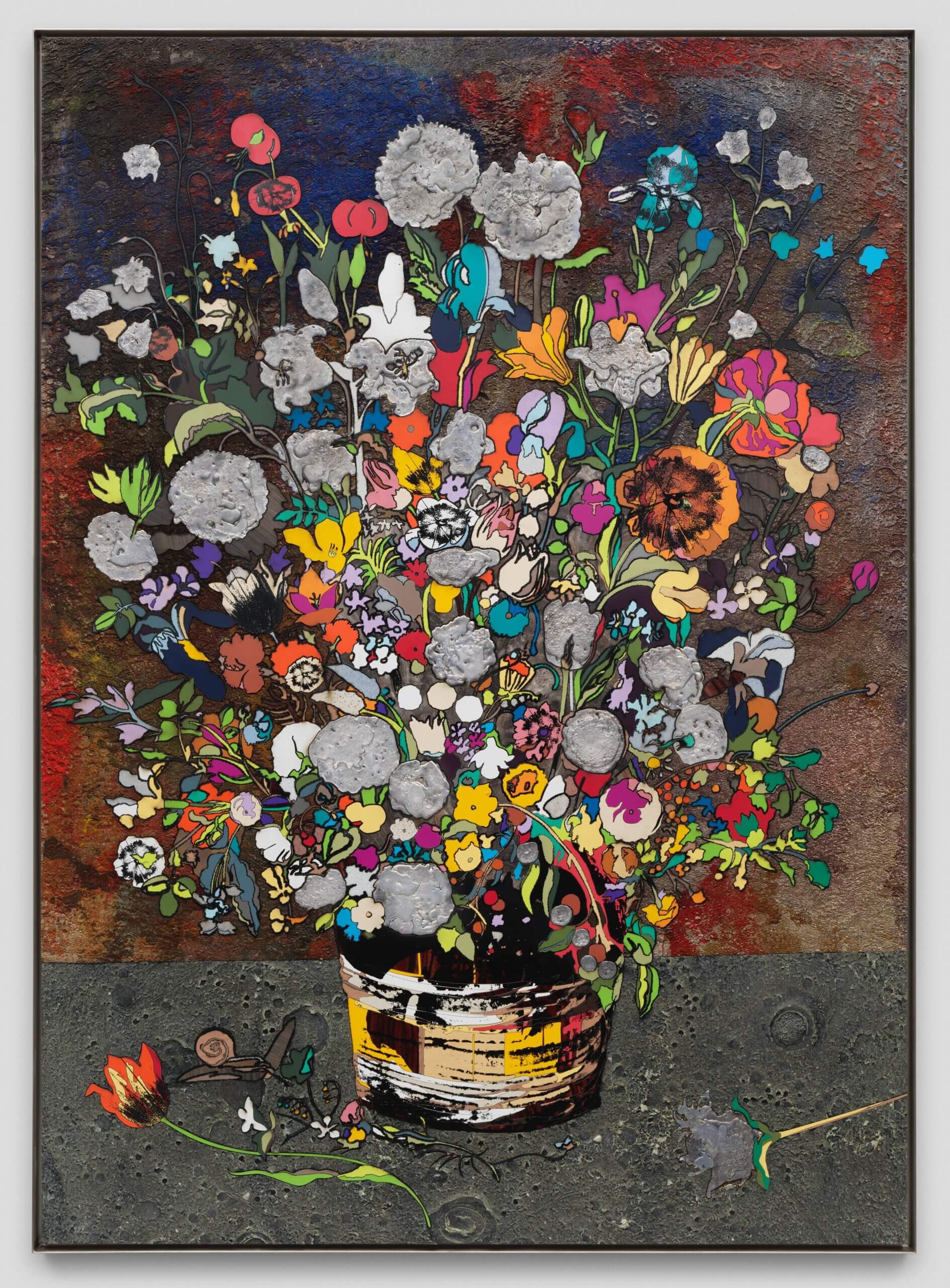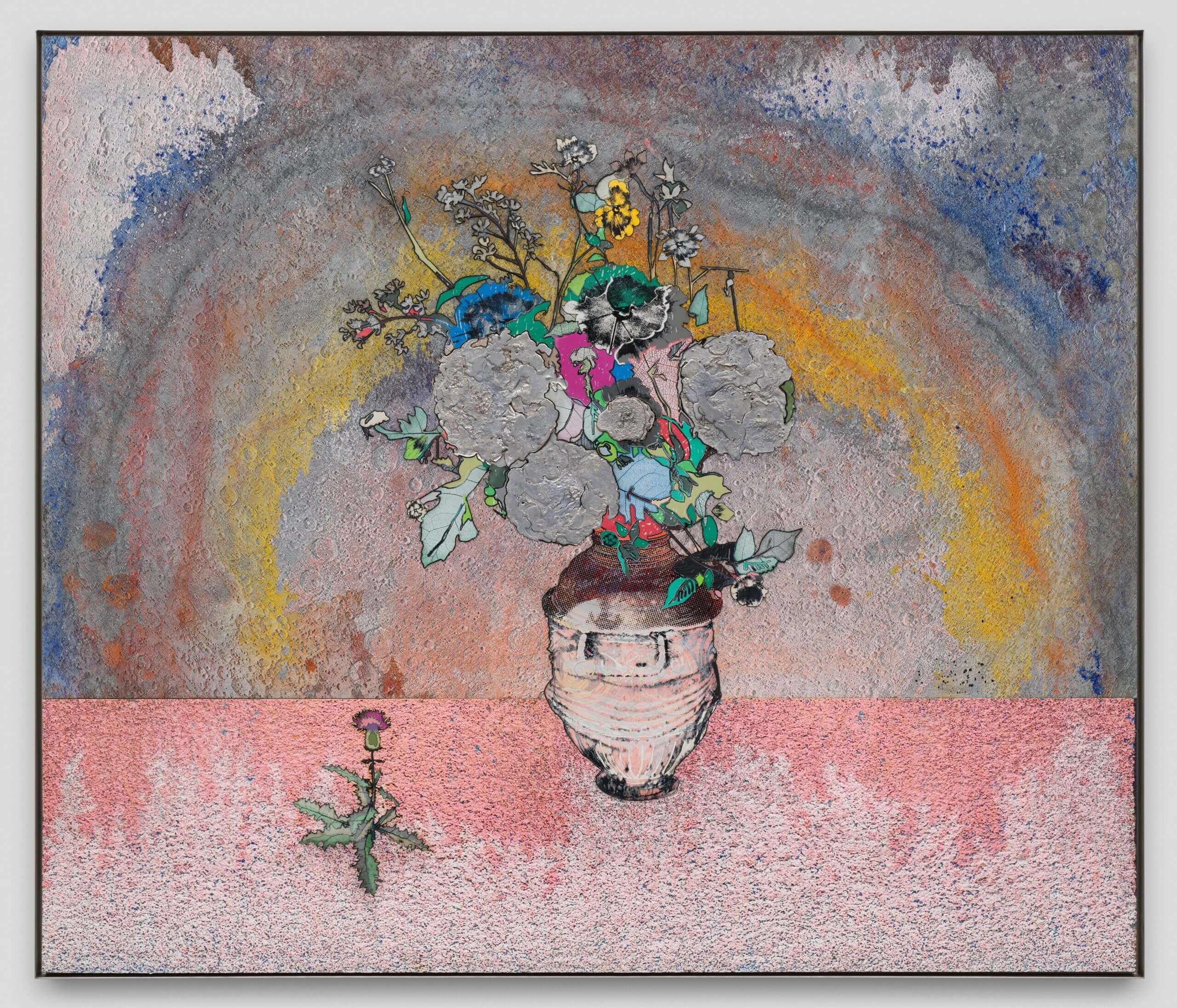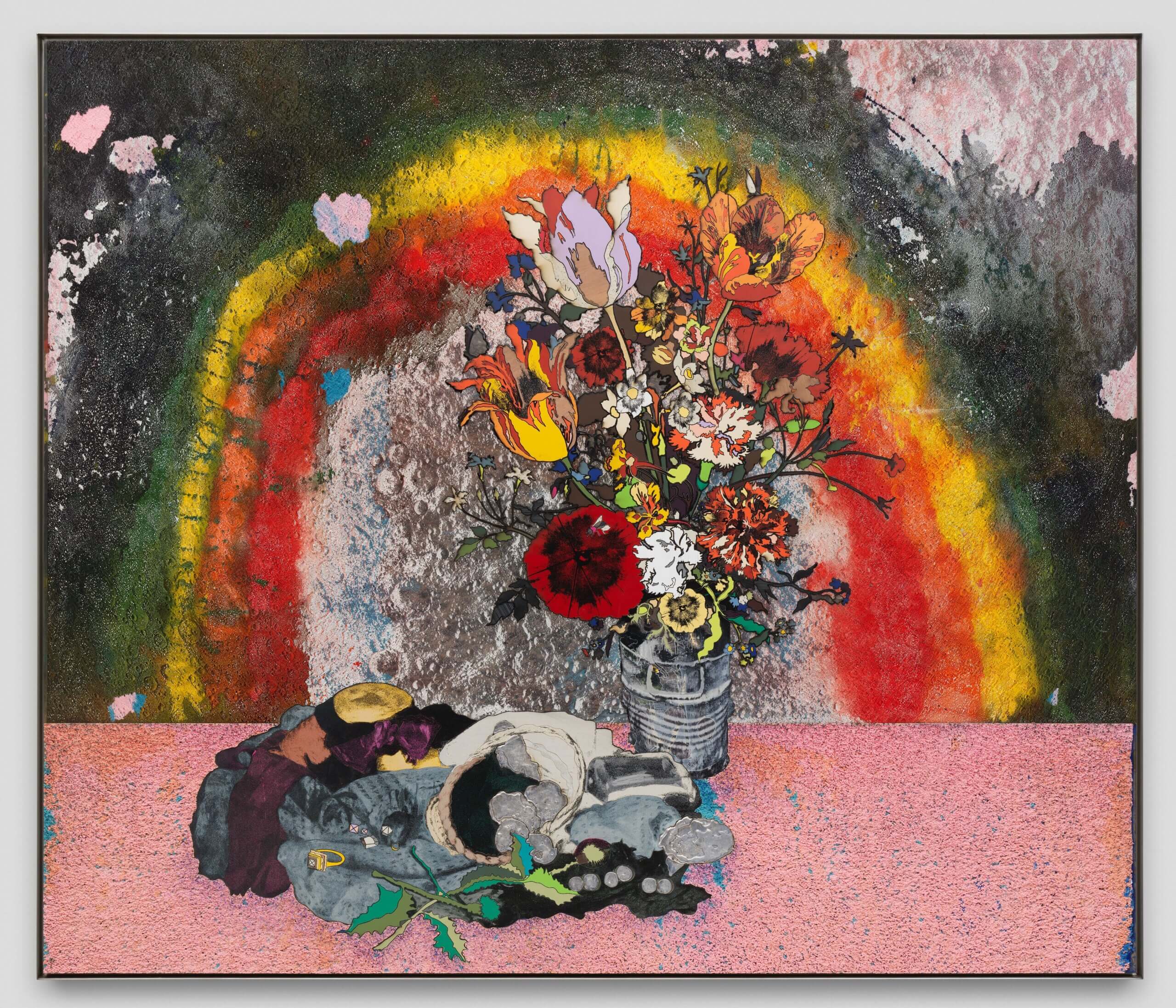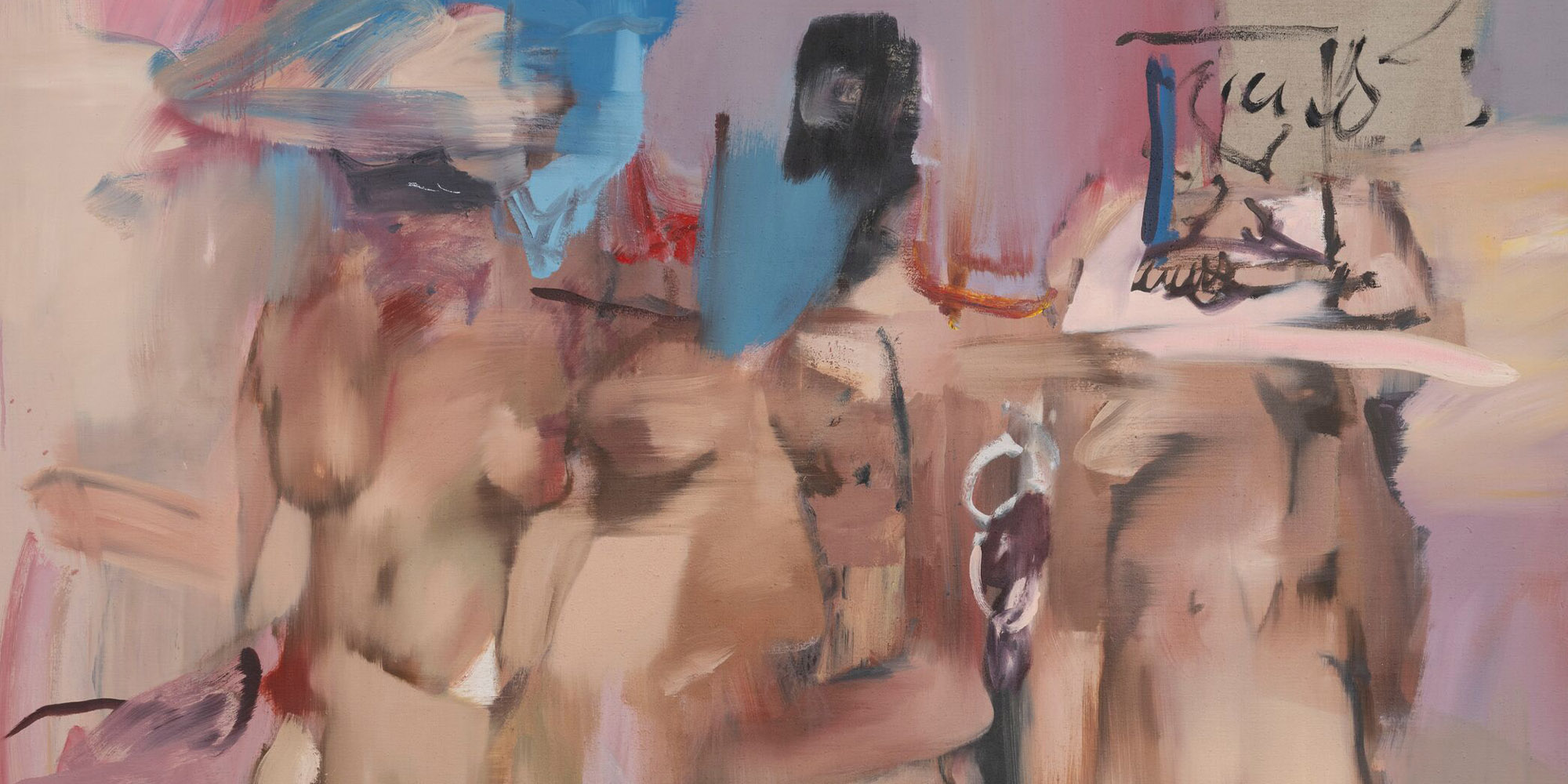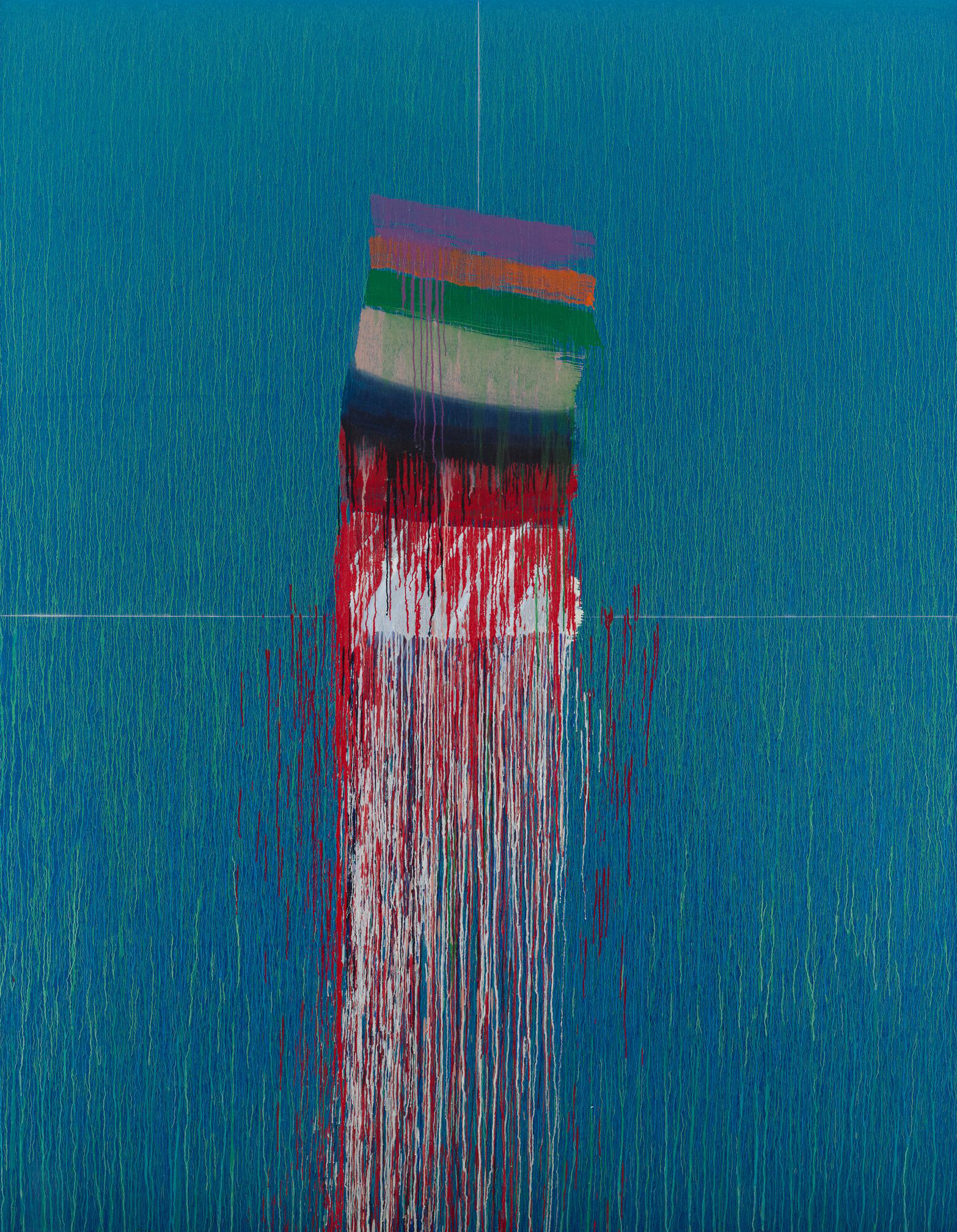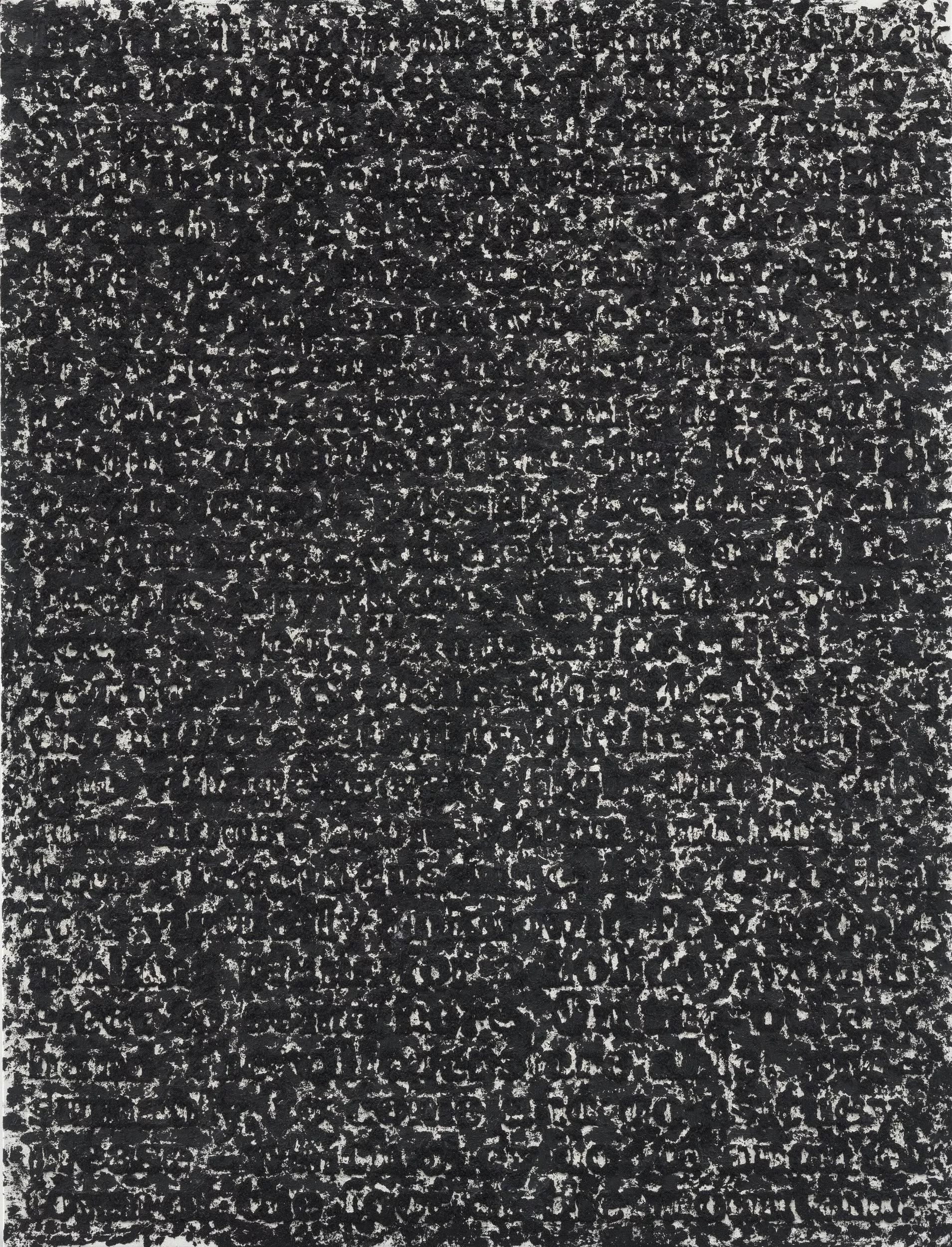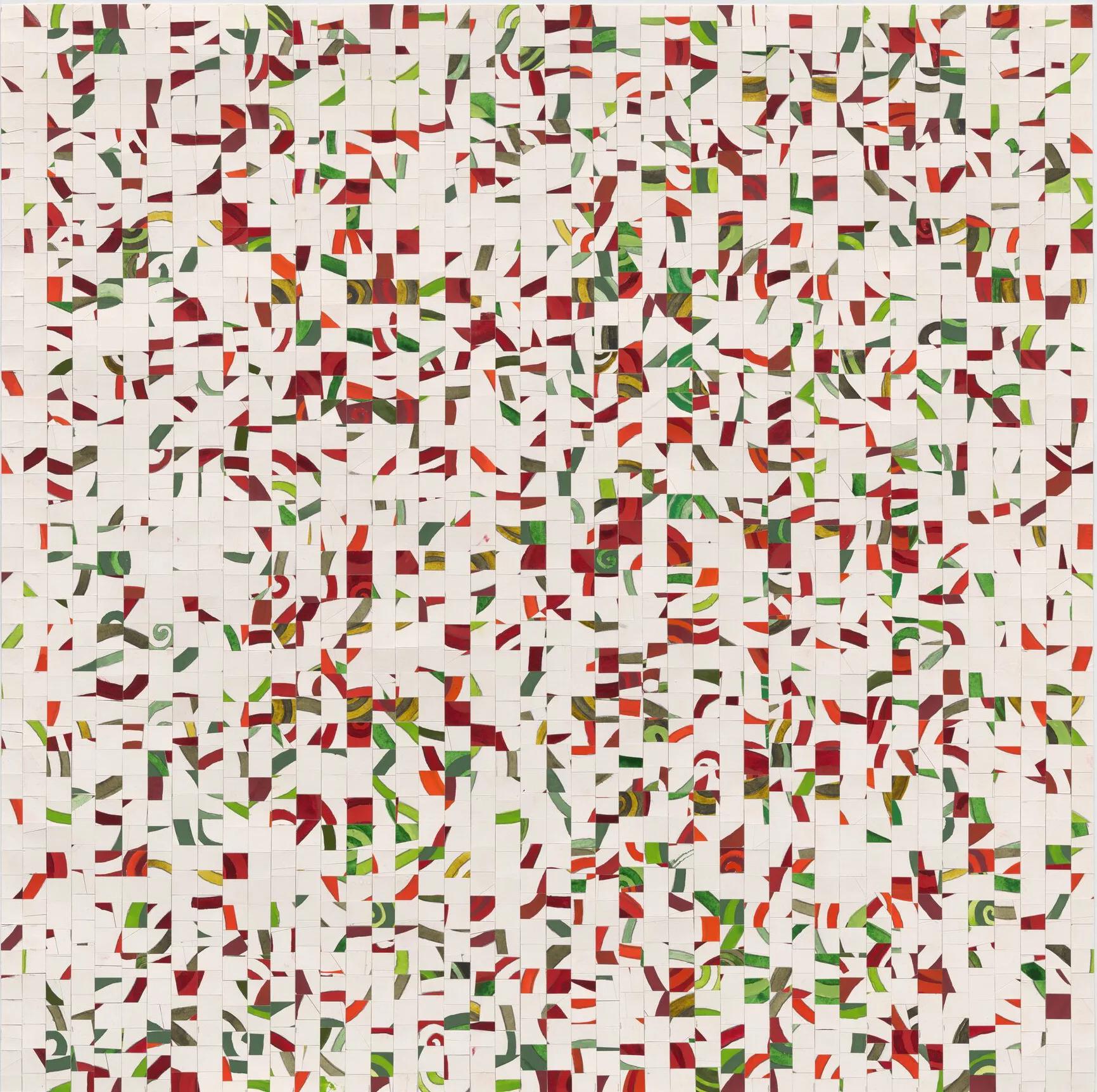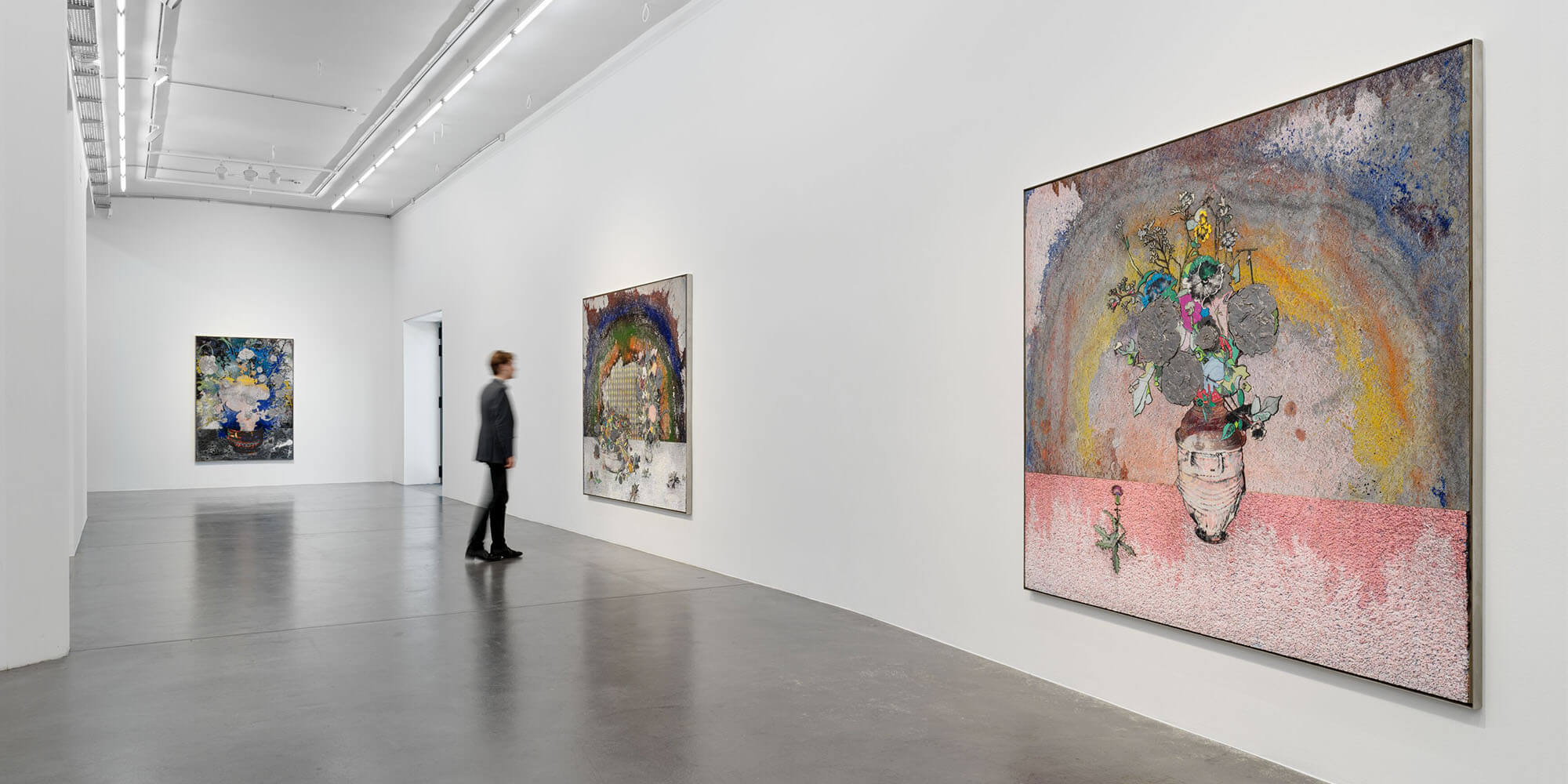
Matthew Day Jackson
Flowers, Windows and Thistles
12 September – 18 December 2020
Zurich
In the first section of the presentation, Jackson presents a new body of paintings shaped like the windows of the Apollo, Gemini and Mercury spacecrafts that first carried Americans into space.
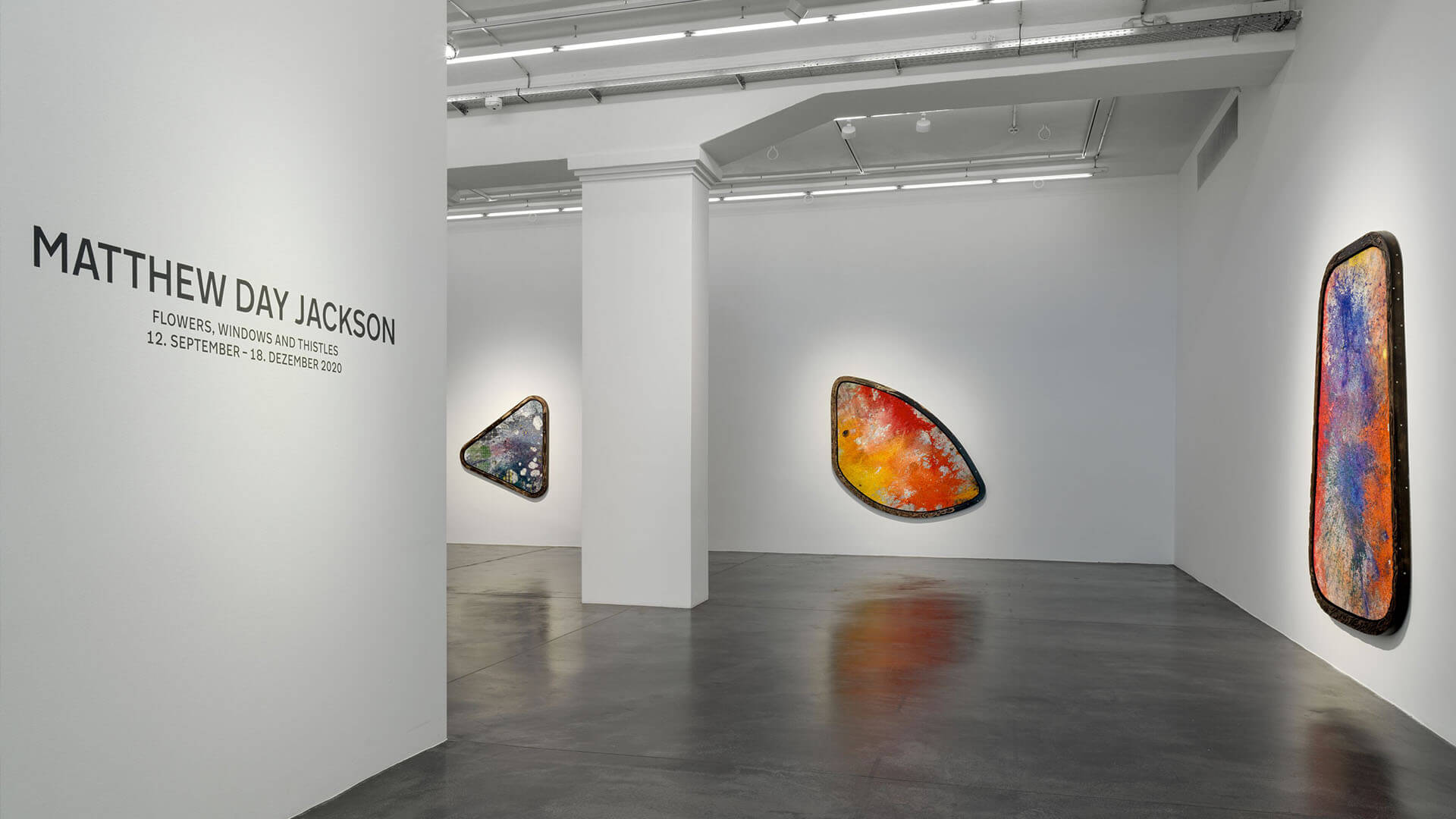
Explore the exhibition
The works capture several mythologies about heroism and innovation in the 20th-century, as the compositions recall Abstract Expressionism in their gestural application of paint. Upon closer examination, their surfaces also reveal the topography of the far side of the Moon. The spills diverge from an expressionistic reading and take on a meaning closer to Robert Smithson’s ‘Asphalt Rundown’.
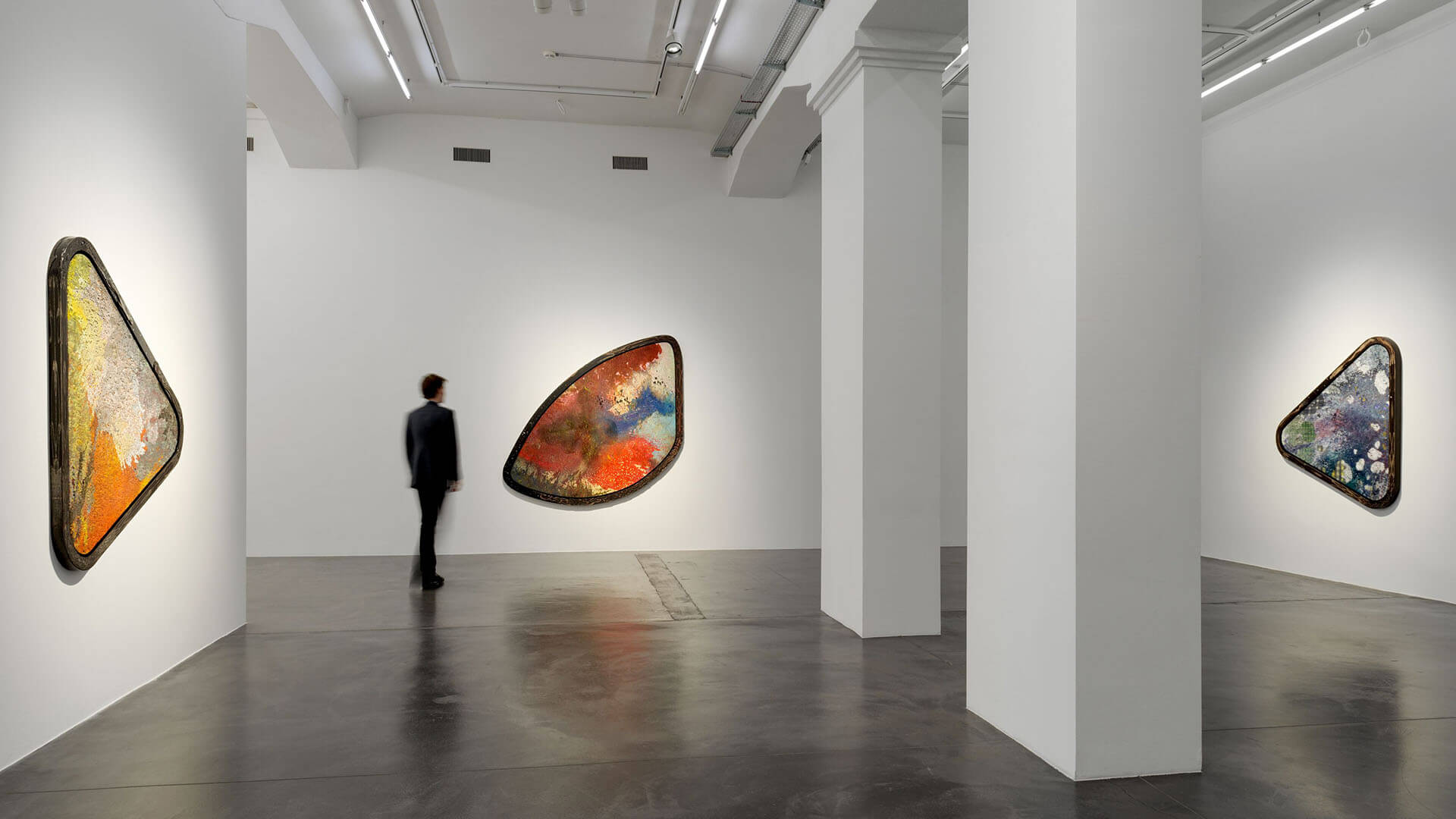
The frames have intricate narratives, hand-carved in an Art Nouveau style in reference to Alphonse Mucha and opiate use that subvert traditional ideas of foreground and background. Jackson shares Art Nouveau’s interest in the representation of nature in art and design, but as in all of his work, there is an underlying critique: Art Nouveau was known for its appropriation of ‘exotic’ styles and techniques from Asia and Africa. As in all Western art and culture, colonisation and escapism remains an irrefutable undercurrent.
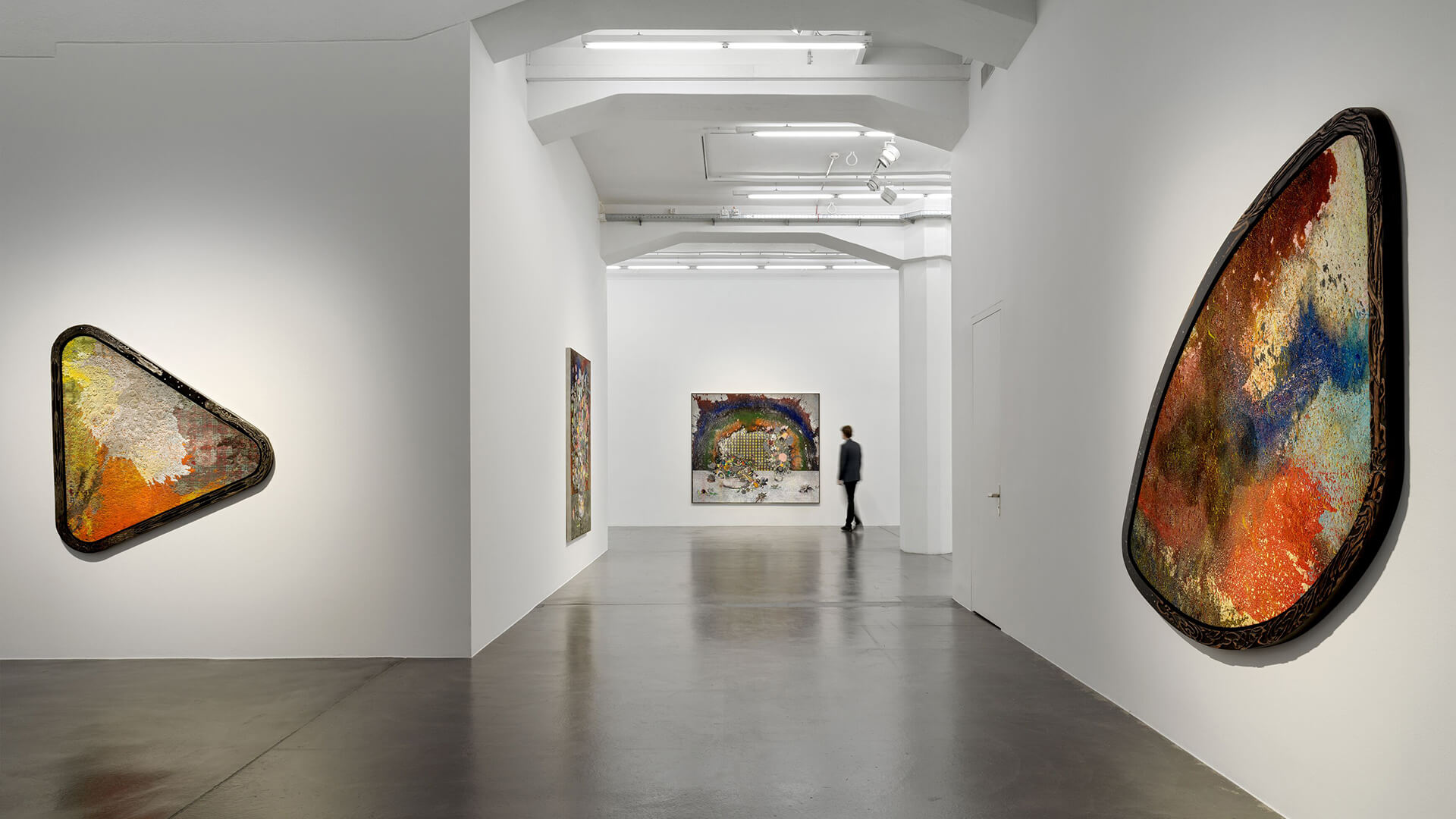
Shown in tandem to these works are new still life paintings which incorporate Jan Brueghel the Elder’s and Younger’s series of flower paintings from the 16th and 17th centuries. Jackson’s flower paintings, in contrast, are entirely composed of synthetic and manufactured materials such as Formica, plywood, fiberglass and epoxy.
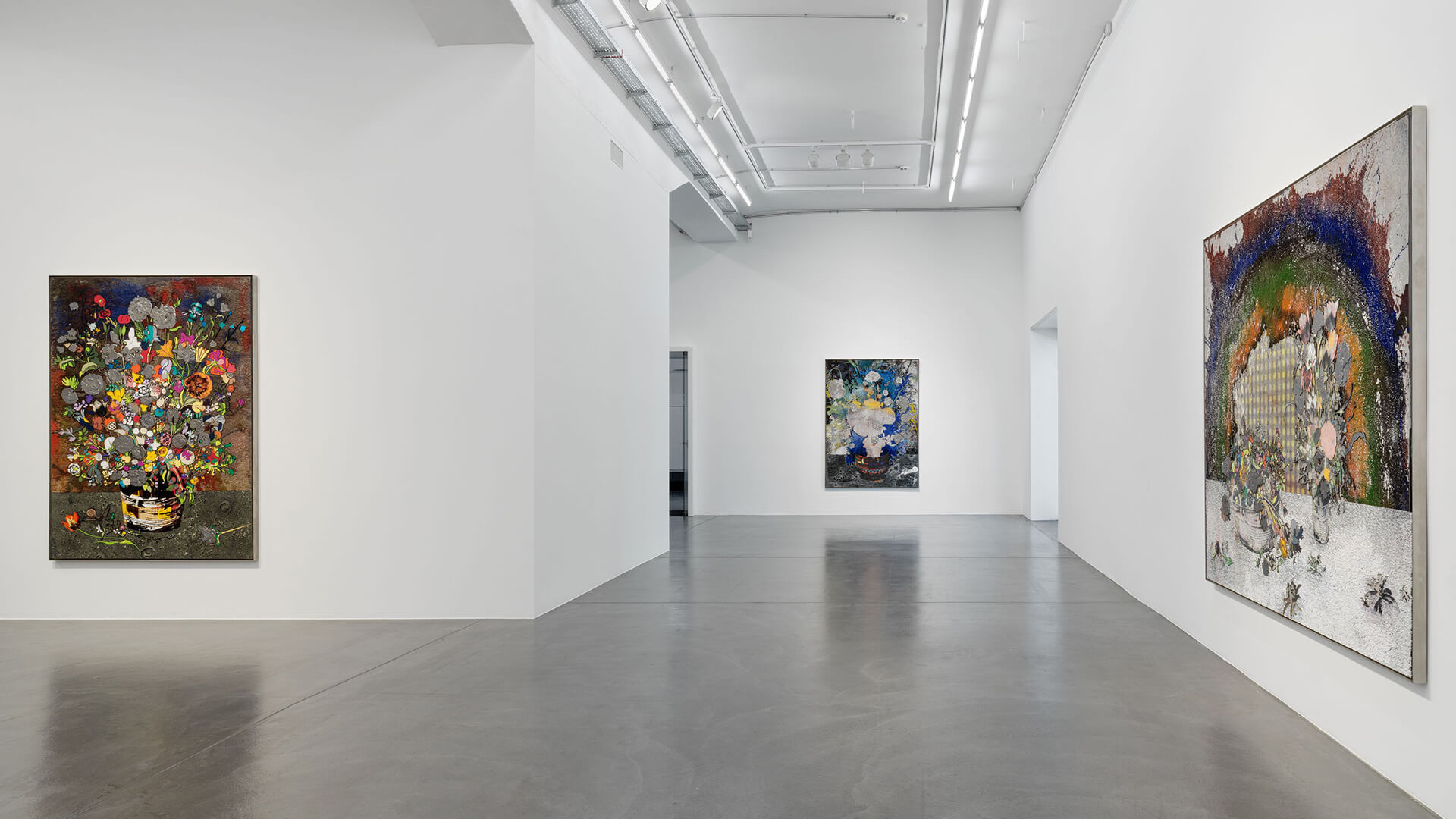
While the era of Dutch Still Life was one of burgeoning scientific knowledge, Jackson signals the simultaneous history of ceaseless misuse and abuse of the natural world and of people. Many of the flowers that make up these intricate compositions would not grow in proximity in nature, proving that what was once the fantasy of the Dutch painters, is now made possible through globalised production – at a great cost.

Throughout Jackson’s oeuvre, process and materiality as a conduit for meaning has been a recurrent theme. The backdrop of these new floral works has been created by casting plastic in moulds that replicate the surface of the far side of the Moon, merging the art historical genres of landscape and still life painting. Pigments and paints are first splashed into the moulds allowing the material to intermingle outside of the artist’s control. Once left to set, the sheets of colorful plastic are then carved out to create the mosaic-like pieces that make up these complex still life compositions. The use of manufactured substances is a meditation on natural beauty versus pleasing artificiality, humanity’s mastery over nature and that beauty can be found in what is ostensibly a mess.
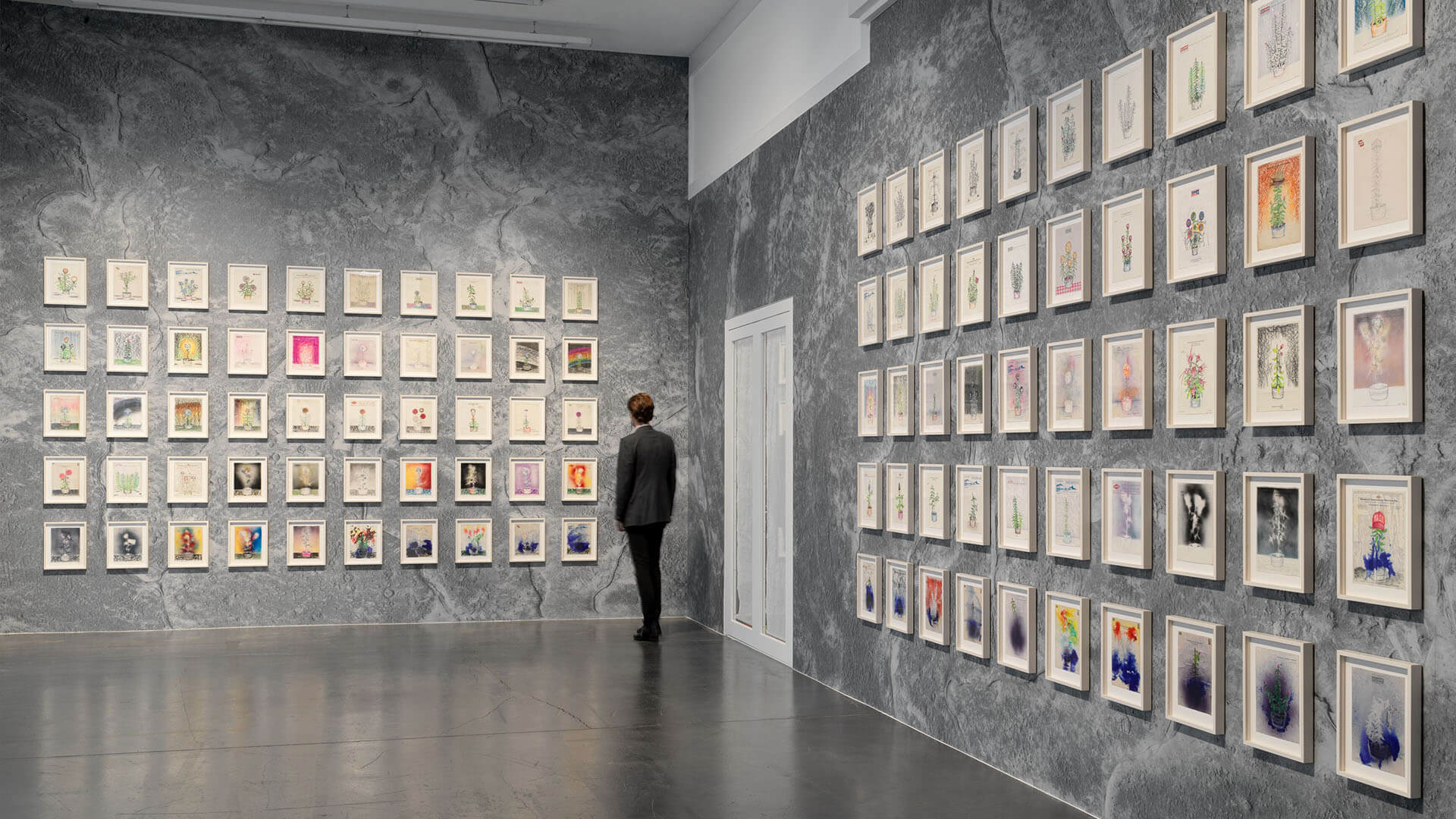
Jackson has also made a new series of thistle drawings during the self-isolation of the pandemic. Drawn on letterheads from various companies that were vital in shaping the US into a global powerhouse of the 20th Century, Jackson returns to themes of conflating the artificial and the organic, industrialisation and nature. The repeated motif of the thistle – considered in North America as a stubborn and invasive plant – holds symbolic meaning: as in much of Jackson’s work, the consequences of technological advancement come to the forefront. The drawings fuse historical references and popular culture in the same light.

About the artist
Matthew Day Jackson is an American artist whose multifaceted practice encompasses sculpture, painting, collage, photography, drawing, video, performance and installation. Born in Panorama City, California, in 1974 and currently living and working on the East Coast, his art grapples with big ideas such as the evolution of human thought, the fatal attraction of the frontier and the faith that man places in technological advancement. In particular, his work addresses the myth of the American Dream, exploring the forces of creation, growth, transcendence, and death through visions of its failed utopia.
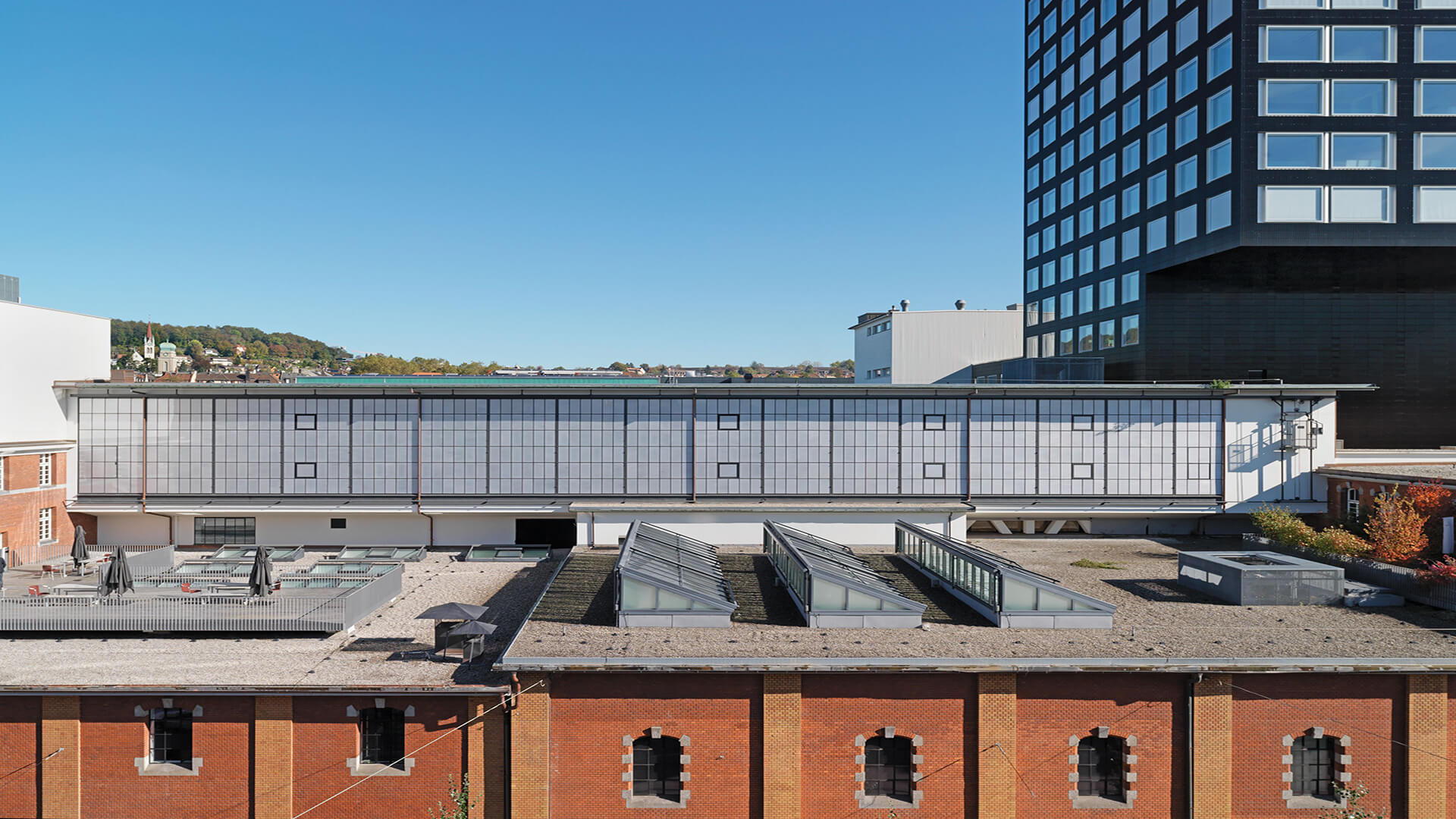
On view in Zurich
‘Matthew Day Jackson. Flowers, Windows and Thistles’ is on view now at Hauser & Wirth Zürich, Tue – Fri, 11 am – 6 pm, Sat, 11 am – 5 pm
Inquire about available works by Matthew Day Jackson
Matthew Day Jackson’s practice grapples with myriad aspects of human experience, honing in on the capacity for destruction and violence under the guise of invention and discovery. The artist returns to Hauser & Wirth Zurich to debut a suite of new drawings and paintings. Utilising the conventions of still life and landscapes in combination with an idiosyncratic use of material and form, these works critique those traditions, their place in Western culture, and the ways they intersect with Western hegemony.
Frequently monumental, his work imposes not only on a large physical scale, but also conceptually, occupying an intellectual terrain that reaches from ancient history to outer space exploration and discovery. The critic Jeffrey Kastner has noted that his works locate ‘startling beauty in their counterintuitive material juxtapositions.’ However for Jackson, beauty is frequently partnered by desolation. His work explores a concept that he terms ‘the Horriful’; the belief that everything one does has the potential to bring both beauty and horror.
–
‘Matthew Day Jackson. Flowers, Windows and Thistles’ is on view now through 18 December 2020 at Hauser & Wirth Zurich.
Related Content
Current Exhibitions
1 / 10
